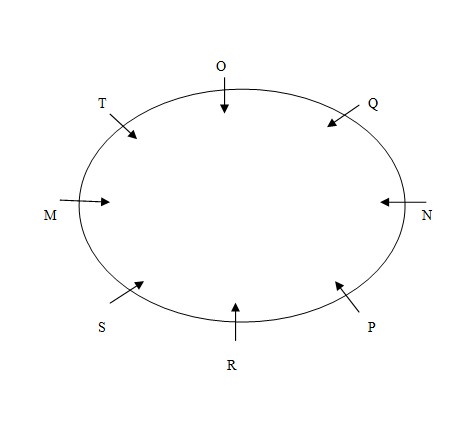Question
How many persons are sitting on the right of P and on
the left of T? Study the following information carefully and answer the questions. There are eight friends M, N, O, P, Q, R, S and T are sitting around a circle facing the centre. O is fourth to the left of R who is fifth to right of Q. P is third to the right of M who is not immediate neighbour of Q or R. N is third to the left of T who is not immediate neighbour of Q.Solution
O is fourth to the left of R who is fifth to right of Q. P is third to the right of M who is not immediate neighbour of Q or R. Person M sits on the second left of R. N is third to the left of T who is not an immediate neighbour of Q. So T will sit on the immediate left of M. Only S is left he will sit on the immediate left of R. Thus the final arrangement – 
Which of the following is an example of transaction in money under GST laws
A bill of exchange drawn on 15th March for 2 months will mature on:
The person in whose Favor a bill is endorsed is called:
The term 'Days of Grace' in relation to a bill of exchange refers to:
When a bill is discounted with the bank, the party that bears the loss if the bill is dishonored at maturity is the:
A bill of ₹50,000 discounted @12% p.a. for 3 months. Bank discount = ?
Mr. Arvind drew a bill of exchange of ₹1,00,000 payable after 3 months on Mr. Rohit, who accepted the bill. Before maturity, Mr. Arvind endorsed the b...
If revenue from operations is Rs.60,00,000 Gross Profit ratio is 60%, Operating expenses are Rs.4,00,000 and Income tax rate is 30%, what will be the op...
Which accounting standard governs the treatment of inventories in India?
The party who is entitled to receive the payment of a bill of exchange is called the:
Relevant for Exams:


